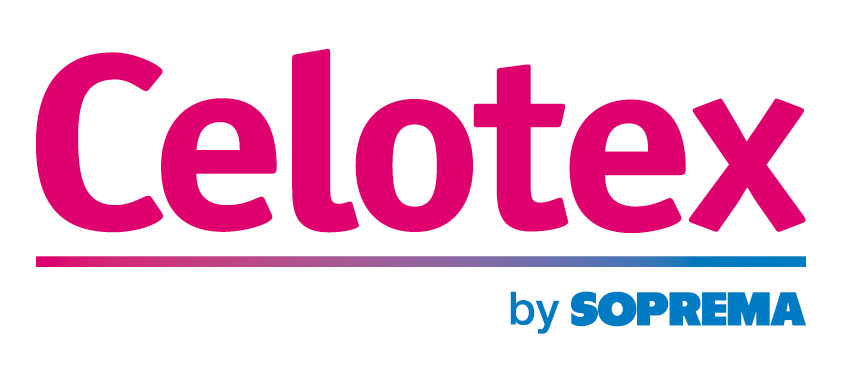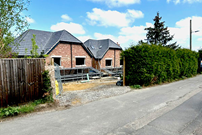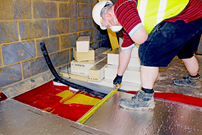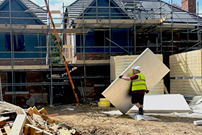Installing Celotex PIR insulation in tight urban plots
When you’re building beautiful, energy-efficient homes on challenging sites, every product decision matters. That was why Resolution Homes—a regional housebuilder known for bespoke, high-spec developments—turned to Celotex for its PIR insulation needs.
U-value Calculator
Start your U-value calculationUsing Celotex XR4000 PIR insulation to meet thermal goals on a space-constrained infill site in Berkhamsted
| Products Used: | Celotex XR4000 |
|---|---|
| Sector: | Housing |
When you’re building beautiful, energy-efficient homes on challenging sites, every product decision matters. That was why Resolution Homes—a regional housebuilder known for bespoke, high-spec developments—turned to Celotex for its PIR insulation needs.
With over 20 years of experience working on small, high-spec developments, Resolution Homes operates like a boutique developer where every detail matters while maintaining the technical confidence of a large developer. For co-owners Carl Porter and Eddie Lawley, quality isn't just a goal, it’s a hands-on priority. From land purchase through to kitchen finishes, they’re involved in every stage of the build. Their homes reflect that commitment, blending architectural ambition with practical performance.
One of their plots is Dell Road in Northchurch, Berkhamsted where everything from delivery to installation had to be choreographed. We visited the development to see first-hand how Celotex insulation is being used, and why product choice really matters on small, challenging sites.
Using Celotex XR4000 as part of a thermally compliant ground floor.
While the team has worked with various PIR insulation products over the years, Celotex was chosen for its consistency and ease of integration with the wider floor build-up, according to the team. Having stocked Celotex during his time in merchant supply, Nick Higgs, former Travis Perkins merchant and now Operations Manager at Resolution Homes, was already familiar with the brand’s track record. That long-term experience made it a dependable choice when it came to product decisions on site.
Celotex XR4000 helps to achieve the required U-value for the ground floors, and is BBA certified for use in ground-bearing floors beneath screed, supporting traceable compliance with the thermal design goal. This supports a smoother approval process with inspectors. “Celotex products align well with typical SAP assessments and architectural U-value specifications,” Nick says. “This makes it easier for contractors to match the design intent without needing to swap out or re-spec at build stage.”
At design stage, the insulation strategy for this site was developed to exceed the thermal performance targets set out in Part L. The ground floor was specified to achieve a U-value of 0.14 W/m²K—supported by Celotex XR4000 PIR insulation—and was approved through SAP and BREL modelling ahead of installation.
From a merchant’s point of view, it’s a name that carries weight with building control and inspectors too. As Nick says: “It might not always be the cheapest on the list, but it’s a product you don’t have to second-guess. You know what you're getting, and that kind of reliability really counts on the sites we work on.”
This was echoed by Talboys Drylining who worked on the build: “We love installing Celotex because you get nice clean and accurate cuts,” owner Chris Talboys says. “That level of consistency makes installation quicker and straightforward.”.
It also helps that Celotex offers strong technical support. For a small, hands-on team managing the build from end to end, having product guidance and performance data readily available made it easier to meet Part L requirements without delay.
Installing PIR insulation on a complex infill site
Celotex PIR insulation boards weren’t just chosen for their thermal performance under screed, but also the confidence they offered in terms of availability and handling.
This is important for developments like Dell Road, which test even the most experienced site managers. What looked like a straightforward two-plot infill scheme (replacing a bungalow with two high-end homes) hid some major logistical headaches.
Planning restrictions meant all construction traffic had to access the site from the rear via a private tarmac road at the highest elevation. The result? A delivery and build platform had to be created at the top level, complete with a two-metre high reinforced retaining wall capable of, as Carl puts it, “holding back the Thames.”
Add to that a narrow, single run working space and no room for forklifts, and you’ve got a site that’s anything but typical. Materials had to be lifted with a 360 digger or manually conveyed. Even standard tasks like screeding became more complex, requiring additional labour and coordination.
Tight urban infill sites like this mean delivery sequencing becomes a fine art. Materials must be timed precisely, access arranged and neighbours appeased. Even where planning allows, physical constraints can make traditional methods unworkable.
“It’s like Jenga,” says Eddie. “You put one thing down, you can’t get to the next bit until you move it again.”
“We’ve never worked on a site like it,” adds Carl. “Everything had to be choreographed. There’s no wiggle room. Every delivery, every pallet had to be planned to the hour.”
That level of planning extended to the insulation. “We’ve used other PIR boards that bow under screed,” says Nick. “That’s not something you want to deal with when space and time are already tight. There’s a comfort in the Celotex brand. You know what you're getting, and that matters when everything else on site is being pushed to the limit.”
On a site full of complications, the insulation did exactly what was needed, without adding to the challenge.
Looking ahead: PIR insulation, regulation and affordability
Resolution Homes is keeping a close eye on the shifts reshaping UK housebuilding—from tougher regulations and rising material costs to the looming introduction of the Future Homes and Buildings Standard in 20251. While the focus of these regulations is firmly on delivering whole-build performance, from U-values and thermal bridging to airtightness, developers like Resolution Homes also need to make sure these changes work commercially.
For small developers working on tight plots and tighter margins, that’s a balancing act. Products need to work hard, not just thermally, but practically too.
“We’re not volume builders,” says Carl. “Every home has our name on it. And that means the spec matters even more to us.”
That’s why insulation choices are becoming more strategic. With PIR products like Celotex’s Thermaclass Cavity Wall 21 full-fill solution—plus a wider suite of cavity wall options now being pushed to market—developers can start building now to the standard that’s coming.
It’s not just about what meets regs today. It’s about being ready for what’s next. And regional housebuilders like Resolution Homes are turning to Celotex to help them do that.
Want to learn about the benefits of using Celotex PIR insulation in your next build? Speak to the Celotex Technical Team for U-value calculations, product guidance and support to keep your project moving.







